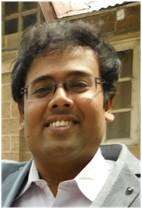
Souvik Basak
Dr. B.C. Roy College of Pharmacy, India IndiaTitle: Molecular modelling and design of a novel nitrogen containing mutant p53 inhibitor having potential to restore its beneficial wild type function
Abstract:
Cancer is one of the world’s leading diseases, causing 9-10 million global deaths as per WHO (World Health organization) data in 2018. One of the major reasons of cancer is mutation in cellular guardian protein P53, whose mutation endows it with loss of function due to loss of its prime important tertiary structure. 50% of cancer cases are basically registered with P53 mutation either somatic or germline. To address this, one novel strategy has been investigated over the last few years is to restore P53 function by restoring its tertiary structure and interaction dynamics via interaction with novel organic ligands. In pursuance, we have a designed a novel nitrogen based heterocyclic ligand which can restore mutant P53 function, especially focussing on Y220C, an aberrant mutation found in breast cancer cells. Interestingly the ligand revealed interactions with the most hotspot zones of P53 that is residue 121-185, residue 242-250 and residue 275-282 insinuating its broad spectrum of action. The ligand was designed by de novo ligand design via fragment based joining and disjoining algorithm on the in situ ligand PK9324 (PDB ID:EYB, Protein PDB: 6GGD) using programme LEA3D. The genetic algorithm was used to create the ligands offsprings and PLANTS based docking with scoring function was used to select the best fitting ligand inside the binding site. Later, molecular dynamics simulation revealed stable seating of the ligand within the cavity together with hydrogen bonding interactions with the key amino acid residues spanning the cavity. The torsional flexibility of the ligand was supposed to be responsible for such nice seating and interaction which could restore the proximity of the S3/S4 and S7/S8 loop interactions enabling refolding potential of the protein. The cysteine residue at 220 position was seen rotated due to ligand interaction shortening the hydrophobic cavity in between which was seen after the mutation in the P53 protein. The dipole moment was restored to original indicating establishment of electrostatic interactions in between the loops which was lost after mutation. The toxicity score in silico has been encouraging by SWISS ADME and Boiled Egg diagram, a drug likeliness screening was also undertaken by Molinspiration and SWISS ADME. The recovery data was promising and altogether it suggests to be a promising anticancer ligand restoring vicious and non-functional mutant P53 into a functional wild type equivalent one.
Biography:
Souvik Basak, age 39 years, has completed his B.Pharm. and M.Pharm from Jadavpur University, Kolkata, India (2004 and 2006 respectively) and accomplished his PhD from Nanyang Technological University, Singapore at 2013. He has been working as Associate Professor, Division of Pharmaceutical Chemistry in Dr. B.C. Roy College of Pharmacy & Allied Health Sciences, Durgapur, WB, India since 2018. He has published more than 30 papers in various international journals of repute, several book chapters and more than 50 conference proceedings/presentations. He has published one Indian patent and associated as research consultant with various international research farms and Professors. He is currently also a member of fellow of Institute of Chemist, India

